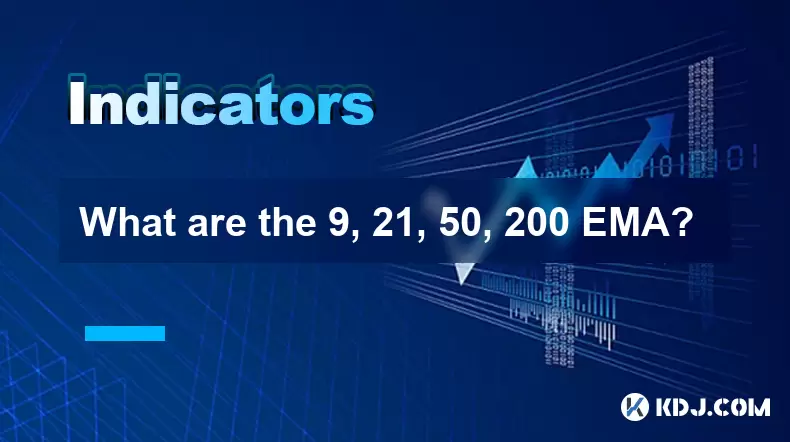-
 Bitcoin
Bitcoin $117400
-0.46% -
 Ethereum
Ethereum $3768
0.60% -
 XRP
XRP $3.551
2.09% -
 Tether USDt
Tether USDt $1.000
0.00% -
 Solana
Solana $203.2
11.30% -
 BNB
BNB $770.9
1.92% -
 USDC
USDC $0.9999
0.01% -
 Dogecoin
Dogecoin $0.2709
-0.02% -
 Cardano
Cardano $0.9024
4.49% -
 TRON
TRON $0.3139
0.60% -
 Hyperliquid
Hyperliquid $45.60
-1.41% -
 Stellar
Stellar $0.4730
-1.34% -
 Sui
Sui $4.025
2.15% -
 Chainlink
Chainlink $19.79
2.19% -
 Hedera
Hedera $0.2724
-2.39% -
 Avalanche
Avalanche $25.93
3.05% -
 Bitcoin Cash
Bitcoin Cash $524.0
-1.83% -
 Shiba Inu
Shiba Inu $0.00001558
0.50% -
 Litecoin
Litecoin $116.7
-0.30% -
 UNUS SED LEO
UNUS SED LEO $8.996
0.00% -
 Toncoin
Toncoin $3.334
1.83% -
 Polkadot
Polkadot $4.506
0.34% -
 Uniswap
Uniswap $10.99
4.83% -
 Ethena USDe
Ethena USDe $1.001
0.03% -
 Pepe
Pepe $0.00001461
3.17% -
 Monero
Monero $320.3
-1.01% -
 Bitget Token
Bitget Token $4.935
0.36% -
 Dai
Dai $0.9998
0.00% -
 Aave
Aave $322.4
-1.25% -
 Bittensor
Bittensor $455.6
9.33%
What are the 9, 21, 50, 200 EMA?
The Exponential Moving Average (EMA) helps crypto traders identify trends and potential reversals by giving more weight to recent price data.
Jul 22, 2025 at 04:01 am

Understanding the Exponential Moving Average (EMA)
The Exponential Moving Average (EMA) is a widely used technical analysis tool in cryptocurrency trading. Unlike the Simple Moving Average (SMA), which assigns equal weight to all price data within a given period, the EMA gives more weight to recent prices. This makes the EMA more responsive to new information, which is particularly useful in fast-moving markets like crypto.
In the context of trading strategies, certain EMA periods are commonly referenced by traders to identify trends, support and resistance levels, and potential reversal points. Among these, the 9 EMA, 21 EMA, 50 EMA, and 200 EMA are especially popular in the crypto space.
The 9 EMA: A Short-Term Momentum Indicator
The 9 EMA is considered a fast-moving average and is often used by day traders and scalpers. It reacts quickly to price changes and is useful for identifying short-term trends and momentum shifts.
- It helps in identifying overbought or oversold conditions when used with other indicators like RSI or MACD.
- Traders often use the 9 EMA in conjunction with the 21 EMA to spot crossovers, which may signal potential buy or sell opportunities.
- On candlestick charts, if the price is consistently above the 9 EMA, it suggests a bullish trend; if it's below, it indicates a bearish trend.
This EMA is commonly used on 1-hour or 15-minute charts for intraday trading in cryptocurrencies like Bitcoin, Ethereum, and altcoins.
The 21 EMA: A Mid-Term Trend Filter
The 21 EMA serves as a balance between responsiveness and reliability. It filters out some of the noise found in the 9 EMA while still offering timely signals.
- It is often used as a dynamic support or resistance level in trending markets.
- When the price crosses above the 21 EMA, it can be interpreted as a bullish signal; a cross below may suggest bearish momentum.
- Combining the 21 EMA with volume indicators can help confirm the strength of a trend.
Many traders use the 9 EMA crossing above or below the 21 EMA as a trigger for entering or exiting trades, especially in volatile crypto assets.
The 50 EMA: A Key Level for Medium-Term Trends
The 50 EMA is a widely watched indicator across both traditional and crypto markets. It helps identify medium-term trends and is often used to determine whether a market is in a bullish or bearish phase.
- When the price is above the 50 EMA, it typically signals a bullish trend; when it's below, it indicates a bearish trend.
- The 50 EMA is also used in double and triple EMA strategies, where traders combine it with the 21 and 200 EMA for stronger confirmation signals.
- In crypto, this EMA is frequently used on 4-hour or daily charts to assess the health of a trend.
It is also common for traders to look for pullbacks to the 50 EMA as potential buying opportunities in an uptrend or selling opportunities in a downtrend.
The 200 EMA: The Long-Term Trend Benchmark
The 200 EMA is considered the gold standard for long-term trend identification. It smooths out volatility and gives traders a clearer picture of the overall direction of the market.
- A price crossing above the 200 EMA is often seen as a bullish signal, sometimes referred to as a "golden cross" when combined with the 50 EMA.
- Conversely, a price crossing below the 200 EMA may signal a bearish trend, known as a "death cross" when confirmed by the 50 EMA.
- Many institutional and long-term traders use the 200 EMA to determine whether to hold or sell their crypto assets.
In the crypto market, the 200 EMA on daily or weekly charts can act as a major psychological level, especially for large-cap cryptocurrencies like Bitcoin and Ethereum.
Using EMA Combinations in Crypto Trading Strategies
Traders often combine multiple EMAs to create a layered strategy that can filter out false signals and provide clearer trade setups.
- 9 EMA + 21 EMA crossover strategy is used for short-term trading, especially in altcoins and futures.
- 21 EMA + 50 EMA + 200 EMA strategy is employed for identifying medium to long-term trends and potential reversals.
- Triple EMA system (9, 21, 50) is used to confirm trend strength and filter out weak signals.
It is crucial to backtest these strategies on historical data and apply them in live trading with proper risk management tools like stop-loss and take-profit levels.
How to Add EMAs to Your Trading Chart
Adding EMAs to your chart is a straightforward process on most trading platforms, including TradingView, Binance, and Bybit.
- Open your preferred trading platform and select the cryptocurrency you want to analyze.
- Click on the indicators or studies section of the charting tool.
- Search for "EMA" or "Exponential Moving Average" in the list of available indicators.
- Set the period to 9, 21, 50, or 200, depending on your strategy.
- Customize the color and thickness of each EMA line for better visual clarity.
- Apply the indicator to the chart and begin analyzing price interactions with the EMAs.
Some platforms allow you to save your custom indicator settings for future use, which is helpful for traders who frequently use the same EMA combinations.
FAQs
What is the difference between EMA and SMA in crypto trading?
EMA gives more weight to recent price data, making it more responsive to price changes compared to SMA, which treats all data points equally.
Can EMAs be used in isolation for trading decisions?
While EMAs are powerful tools, they work best when combined with other indicators like volume, RSI, or MACD to confirm signals and reduce false positives.
How do EMAs perform in highly volatile crypto markets?
EMAs can lag in extremely volatile conditions, but using shorter timeframes and combining them with volatility indicators like Bollinger Bands can improve performance.
Are EMAs suitable for all cryptocurrencies?
Yes, EMAs can be applied to any crypto asset, but their effectiveness may vary depending on the liquidity and volatility of the specific cryptocurrency.
Disclaimer:info@kdj.com
The information provided is not trading advice. kdj.com does not assume any responsibility for any investments made based on the information provided in this article. Cryptocurrencies are highly volatile and it is highly recommended that you invest with caution after thorough research!
If you believe that the content used on this website infringes your copyright, please contact us immediately (info@kdj.com) and we will delete it promptly.
- XRP, Bitcoin, Ripplecoin: Navigating the Crypto Landscape in 2025
- 2025-07-22 20:30:13
- Cardano Ecosystem Watch: Can PayFi Token Remittix Trigger an ADA Overtake?
- 2025-07-22 20:50:13
- JasmyCoin Price Forecast: Chart Analysis Points to Potential Surge
- 2025-07-22 20:55:13
- Remittix, XRP, and Dogecoin: What's Hot in the Crypto Game Right Now?
- 2025-07-22 20:10:14
- BlockchainFX, PEPE, and USDT: What's the Buzz in the Crypto Jungle?
- 2025-07-22 18:50:12
- Ripple's RLUSD: Institutional Backing Fuels Stablecoin Ascent
- 2025-07-22 18:30:12
Related knowledge

Advanced RSI strategies for crypto
Jul 13,2025 at 11:01am
Understanding the Basics of RSI in Cryptocurrency TradingThe Relative Strength Index (RSI) is a momentum oscillator used to measure the speed and chan...

Crypto RSI for day trading
Jul 12,2025 at 11:14am
Understanding RSI in the Context of Cryptocurrency TradingThe Relative Strength Index (RSI) is a momentum oscillator used to measure the speed and cha...

Crypto RSI for scalping
Jul 12,2025 at 11:00pm
Understanding RSI in the Context of Crypto TradingThe Relative Strength Index (RSI) is a momentum oscillator widely used by traders to measure the spe...

What does an RSI of 30 mean in crypto
Jul 15,2025 at 07:07pm
Understanding RSI in Cryptocurrency TradingRelative Strength Index (RSI) is a momentum oscillator widely used in cryptocurrency trading to measure the...

What does an RSI of 70 mean in crypto
Jul 13,2025 at 06:07pm
Understanding the RSI Indicator in Cryptocurrency TradingThe Relative Strength Index (RSI) is a widely used technical analysis tool that helps traders...

Does RSI work in a bear market for crypto
Jul 16,2025 at 01:36pm
Understanding RSI in Cryptocurrency TradingThe Relative Strength Index (RSI) is a momentum oscillator used by traders to measure the speed and change ...

Advanced RSI strategies for crypto
Jul 13,2025 at 11:01am
Understanding the Basics of RSI in Cryptocurrency TradingThe Relative Strength Index (RSI) is a momentum oscillator used to measure the speed and chan...

Crypto RSI for day trading
Jul 12,2025 at 11:14am
Understanding RSI in the Context of Cryptocurrency TradingThe Relative Strength Index (RSI) is a momentum oscillator used to measure the speed and cha...

Crypto RSI for scalping
Jul 12,2025 at 11:00pm
Understanding RSI in the Context of Crypto TradingThe Relative Strength Index (RSI) is a momentum oscillator widely used by traders to measure the spe...

What does an RSI of 30 mean in crypto
Jul 15,2025 at 07:07pm
Understanding RSI in Cryptocurrency TradingRelative Strength Index (RSI) is a momentum oscillator widely used in cryptocurrency trading to measure the...

What does an RSI of 70 mean in crypto
Jul 13,2025 at 06:07pm
Understanding the RSI Indicator in Cryptocurrency TradingThe Relative Strength Index (RSI) is a widely used technical analysis tool that helps traders...

Does RSI work in a bear market for crypto
Jul 16,2025 at 01:36pm
Understanding RSI in Cryptocurrency TradingThe Relative Strength Index (RSI) is a momentum oscillator used by traders to measure the speed and change ...
See all articles

























































































